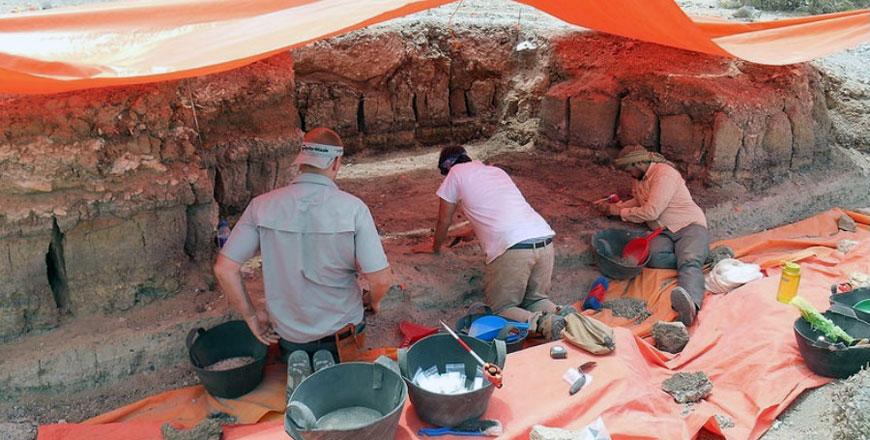You are here
Extinct Paleolithic marshes near Azraq offer scientists clues to Jordan’s ancient history
By Saeb Rawashdeh - Dec 18,2018 - Last updated at Dec 18,2018

In this undated photo, a limestone sinkhole site near the Dead Sea’s, being investigated for skeletal remains and other data on Jordanian prehistory, can be seen (Photo courtesy of James Pokines)
AMMAN — Former marshes near Azraq and their "assemblages of stone tools" may offer some clues about the Paleolithic period in Jordan, an American scholar said in an interview with The Jordan Times.
Faunal remains are sparse in Azraq's vicinity due to poor preservation, but scholars are searching for additional sites where the preservation of bones may be better, said James Pokines, an associate professor at the Boston University School of Medicine and Forensic Anthropology.
“We are also examining the taphonomic processes of the region — these refer to all the changes that something living goes through after death, until its bones or remains are recovered, sometimes thousands of years, or more, later."
The changes can include decomposition, scavenging, weathering and burial, Pokines said, noting that they are trying to understand how bones and other biological remains are getting into the sites and what information is lost along the way.
"We have already obtained blood proteins from stone tools there, with species including duck, camel, rhinoceros, horse or their close relatives," Pokines added, saying that the species that the team had identified included an extinct elephant, rhinoceros, camel, horse, donkey, cow and a probable lion.
The bones are generally in poor condition, due to the chemistry and age of the deposits, but "we are finding these in conjunction with large amounts of stone tools from sites that were along the margins of the Azraq wetlands", the scholar underlined.
The work on elephant molars was done in conjunction with Adrian Lister in the UK and included 3D scanning, printing and CT scans.
"The dromedary [Arabian camel] remains are also very interesting, as very little is known about the evolutionary history of camels in this region prior to their domestication," he stressed.
The professor added that the former wetlands near Azraq contained many species, which were probably attracted to the wetlands as it was likely an excellent place to hunt.
Pokines is currently investigating a large limestone sinkhole in the Madaba/Dead Sea region that has been open for a long time and acts as a depository of animal remains.
"Through many different means, including falling in, bones are getting incorporated into the sediments below, these deposits may go back in time to the Paleolithic era and could include hominin remains," he emphasised.
Related Articles
AMMAN – A team of archaeologists from the Canadian University of Victoria (UVic) has recently revealed “surprisingly sophisticated” adaptati
AMMAN — With the support of the Swiss Agency for Development and Cooperation, the Royal Society for the Conservation of Nature has construct
AMMAN — The rehabilitation of the Azraq Wetland Reserve and the pumping of water to different parts of the oasis have diversified the bird s
















